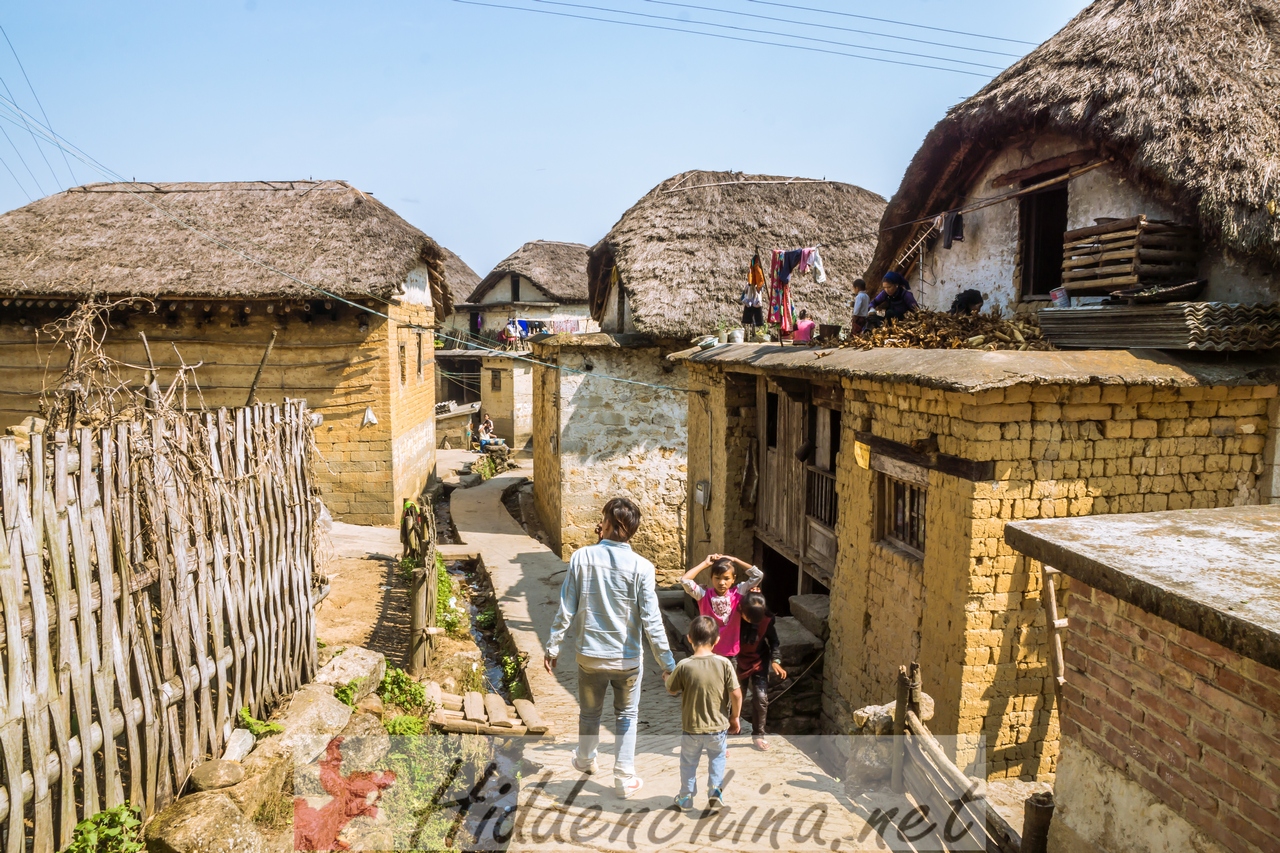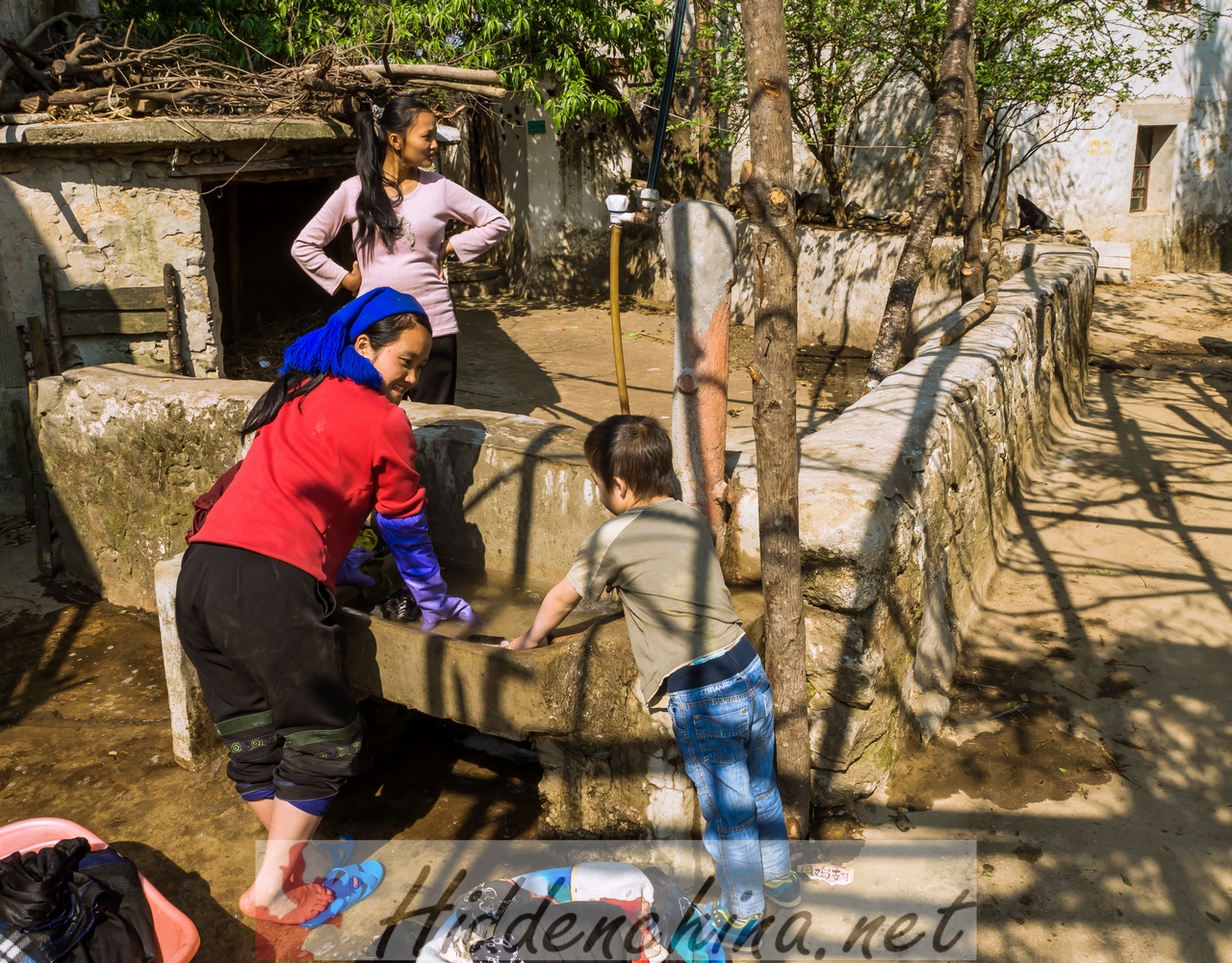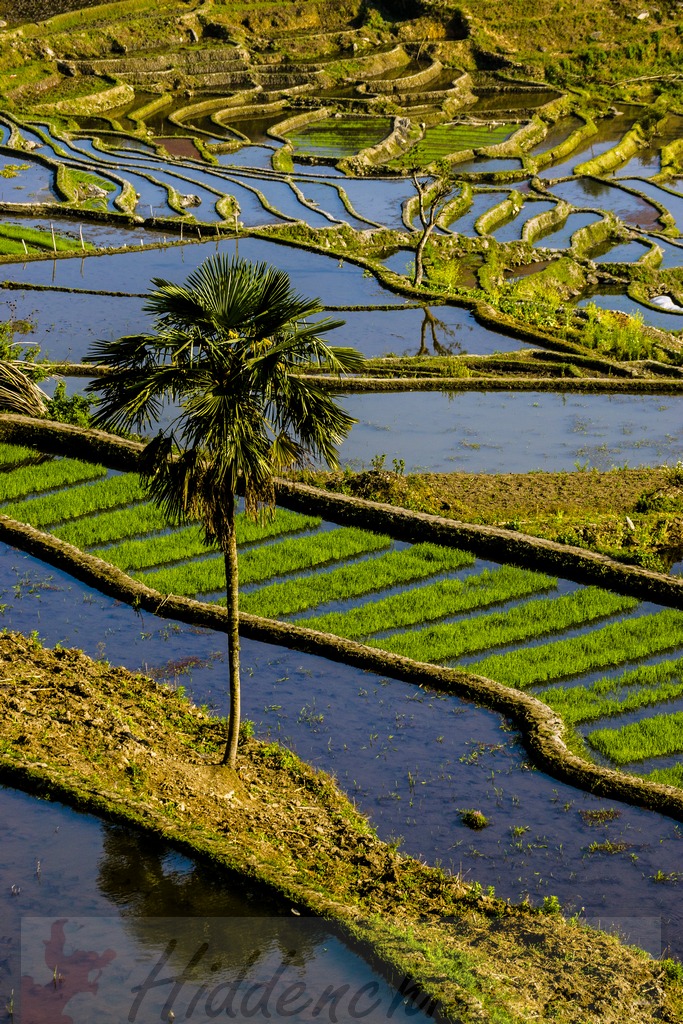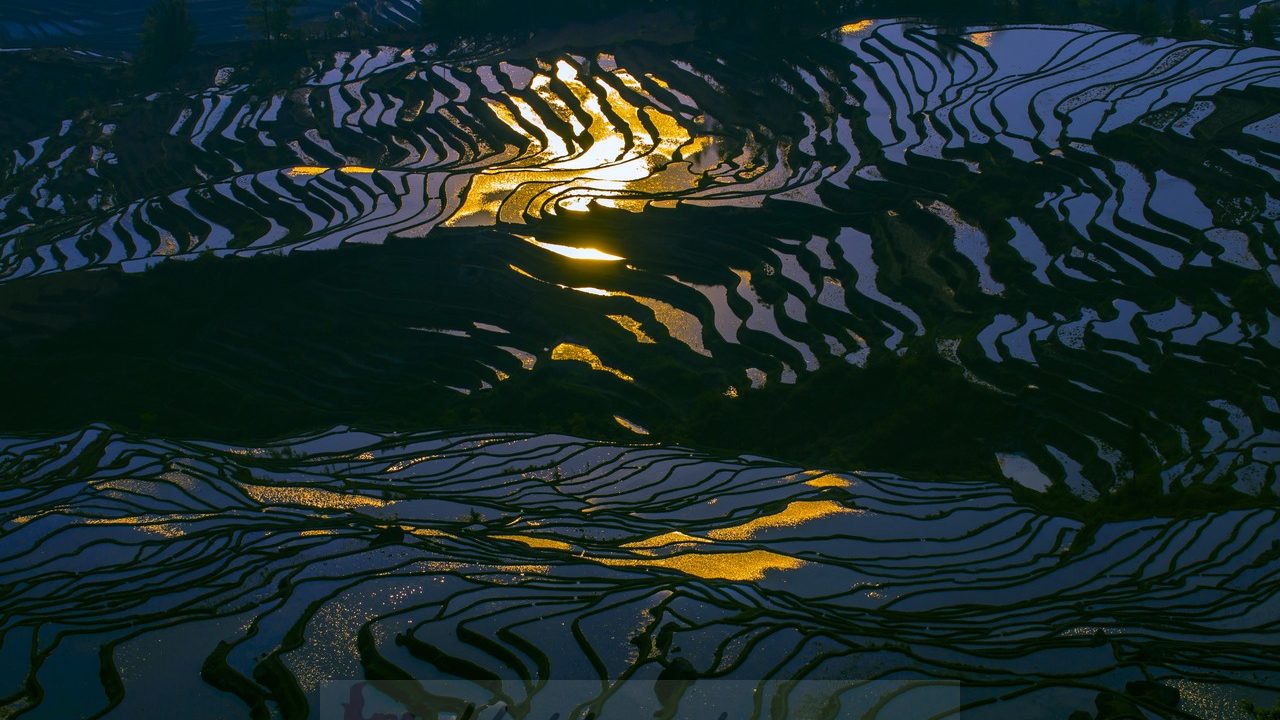
The Honghe Hani Yuanyang Rice Terraces belong to China’s UNESCO World Heritage Sites and are especially for photography enthusiasts and pros an absolute delight. The Rice Terraces can be reached from Yunnan’s Capital Kunming in a 7 hour drive, but the long journey is absolute worth it. There are basically 3 different routes how to get there and the most easy one is certainly to catch the G213 Highway towards Pu’er. After around 3.5 hrs on the highway you exit at Yuanjiang and then head east to Yuanyang – Nansha (around 2 hrs) and from there up the mountains to the South to Xinjie (around 1 hour). There you have to purchase your entrance tickets (RMB 180 per person / USD 30) and then you can drive another 30 minutes to Duoyishu, right into the heart of the Rice Terraces where you can find plenty of hostels and guest houses. When I drove up there, I took a different route via Jianshui, so I arrive just at sunset at the Bada section (around 20 minutes before Duoyishu) where I made a quick stop to take some first shots.
If you are interested in traveling with us to the Honghe Hani Yuanyang Rice Terraces, you can find here more information.

One of the guest houses offers unobstructed view over the Rice Terraces, towards East, right into the sunrise. Although the room rates are on the expensive side it’s worth every dime, since all rooms have a small balcony and great view. In addition the house has a roof terrace which is perfect for the sunrise shooting. For ambitious and demanding photographers who don’t mind to spend extra for location, it’s a perfect place to go and the hostel we usually use on our tours.

To get to know the area, I spent in total four nights. Two of them in above mentioned hostel and the other two in a different guest house two villages away. The hostel there had definitely more charm and is located in the middle of a nice village, but is for photography a less ideal location, since you need to get out of the bed and walk several hundred meters to get to a good shooting locations. Since I was with my 5 year old on the trip, it’s not an option when shooting has a high priority, so the first hostel was by far the better choice in this situation. For travelers who don’t have such a strong photo drive, the latter hostel would be the better choice.
On the second day I hired a local guide and we did a round tour in the area to get an idea of the different locations. First we drove along the slopes of the valley to a village called Aicun from where you can hike in around 15 minutes to another village which has still a number of the traditional Hani mushroom houses. Those usually have 3 floors and are built from Earth, Stones and Mud and fixed with Bamboo and Wood. The lower ground floor serves as den for the livestock, the second floor is the living area of the family and the roof floor serves as storage space.

Life in the villages is still quiet and kind of off the beaten track, but the increasing tourism is a welcome additional source of income and the locals are getting more and more wealthy – not in comparison to the Chinese who live in the cities, but compared to the past. TV and especially smart phones increase the demand among the young Hani for more and better lifestyle and drives them away form the traditional farm life and many move to the cities in the hope for better paid work. On top of that, the locals get more and more involved in tourism and less and less people remain in the fields. My guide sarcastically commented that in the near future the locals will probably only work in the rice fields for the tourists and that probably even workers from other areas will be drafted and paid to do that work. Nevertheless, there are still lots of mainly local elders who still wear traditional clothes and despite the life is not easy and not luxurious at all, one can see that there is definitely a demographic and social change going on.

Back on the road we drove further East and discovered at the village of Hadanpu a viewing platform which was built by the locals from wood. There was a fence shielding it off so that everybody who wanted to take a picture had to pay 10 RMB to access the platform.

At Handanpu we turned around and had to drive back until Pugao / Laozhai where we turned westwards. The road took us several kilometer up the mountain onto a pass from where we drove into a different valley. The slopes are quite steep here and there are some of the more remote villages that can be spotted in the distance. After some narrow turns we came to the section of Laohuzui, which is for many to be considered as the most beautiful spot of the Yuanyang Rice Terraces. As it was already lunch time, we stopped at one of the many food stalls where the locals serve boiled eggs, BBQ Tofu and veggies and of course noodle soups.
The Laohuizu Terraces offer a different perspective as you look from a vantage point several hundred meters down onto the fields. Depending on light, season and vegetation it offers opportunities for great shots throughout the whole year and it certainly is also a great place for sunset pics. However, having a wide angle lens is a must, but also a decent telezoom comes in handy for details.


From Laohuzui we headed to Bada, our last destination for the day and a rather unpleasant surprise was waiting for me. There are two viewing platforms and on the lower one, the one with the better view, I tumbled upon a 20 or so headed Chinese travel group of retirees. It was around 3pm and sunrise would be at 7pm. The lower platform has different levels (think of a long, flat set of stairs) ans each of the around 1 meter wide steps was occupied with an expensive Carbon fiber tripod which was of course placed right next to the guardrail for unobstructed view. I found out that the group arrived here already 30 minutes before me, just to secure the best place for the sunset. A glance on their equipment (full frame DSLRS – D5MK3, D810 and top notch lenses) revealed that we have some serious “Tuhao” cases here (Tuhao means in Chinese “Nouveau riche”). When I tried to take shot and accidentally touched one of the guys tripod, he started to yell at me I shouldn’t touch and / or damage his equipment. At that point I was very close to send a Chinese retiree including his D-810 and carbon tripod 200 meter further down to take some macro shots of the rice fields. I think he could see in my eyes, that by now himself and his equipment were in serious danger and he graciously allowed me that I cam move his tripod to take a shot (but only if I place it back to its original position). So here a hint to the less experienced China travelers on the quest for sunrise / sunset pics: Either you get up VERY early (or you secure your spot already the evening before) or you better have a lot of patience and for sure a camera with foldable display (Sony or Nikon D750) is VERY useful.

On the way back from Bada we stopped near Shengcun, the largest village in the area and after 10 more minutes drive we arrived at a cliff where we had another great view on one of the more hidden spots. Again I was very happy that I hired a local guide, without I would have missed out the best photo locations. I knew that the next day I will come back to this place for the sunrise. However, my son got a bit tired, so we returned back to the hotel.

After a break at the hotel, our guide took us to another “secret spot” for the sunrise. Apart form us there were only a handful of other photographers, all of them Chinese. With my APSC Sony A77, 16-50 f2.8, 105 f3.5-5.6, 70-300G f3.5-5.6 and a conventional but solid Manfrotto Tripod I looked like a beggar. All the folks around me had FF DSLR’s with A 5DMk2 which I spotted as the lowest model, all the rest were pro cameras. Astonishingly, except for one other, I was the only who had his camera on a tripod and shot with remote. There was quite some wind, so light Tripods were not ideal as opposed to my heavy Manfrotto that stood rock steady. Most funny one was a 60-something Chinese lady. She had the newly released Sony A7R (with a whooping 36MP sensor) and the 24-70 f4 CZ and she wanted to do an In-camera Panorama shot, but something didn’t seem to work. After she tried a few times without success, I told her to move the camera a bit faster but that also didn’t help. So I grabbed her camera to check what was wrong.When half pressing the shutter, the screen showed me in big that I have to move the camera from up to down to do the Panorama, whereas she tried to shoot from left to right. So I explained her that she needs to change the Pano settings in the menu. She insisted though that this was not the problem, but when showing her in the Chinese menu where to change it, she finally got it. This left me with the questions why the hell somebody would be equipment worth over 5000 USD when a point and shoot is already to much to handle…. Well, it’s China and it’s the same with cars. Some young (and old) kids just got their driving licence and then buy a Porsche, or a big Benz or something alike (most important it’s German and has a lot of power, despite they a) could not handle it and b) there is no use for it in China’s notoriously congested cities…. Anyway, the old lady was happy that she knew how to shoot a Pano and I could focus again on mys shots:



When the sun disappeared we called it a day and drove back to the hotel. Since my son Eric had to drive a lot in the past days, I decided to plan a relaxing day. All we did was change the hotel on that day to test a second option in the area. Since Eric was very tired, I could get up in the morning for the sunrise and just walk from my room up one flight of stairs to reach the terraces. Again, the weather was near to perfect:


As mentioned, we took it easy for the rest of the day, Eric got some Tablet and DVD time while I could check and backup my pics. In the evening we headed again out for the sunset.

The next morning we had a different guide (as a Travel Agent I also need to “test” different guides) and first we headed Shengcun for the morning market. Like in most Chinese ethnic minority areas, it’s mostly the elderly who still wear the traditional clothes, whereas the young ones dress up in a more modern way and don’t feel much like wearing the traditional costumes. Currently (as of 2015) there are around 1.8 Mio Hani people in Southern China and it is one of the largest of its 56 ethnic minority groups. Researchers are not quite sure what background the Hani have, some evidence points that they migrated around 300 BC from the Tibetan Kham area (Eastern Tibet and Western Sichuan) to the south. The largest part of the Hani live in the Honghe-Hani prefecture, in the area of the Yuanyang Rice Terraces, but the Hani can be found throughout most parts of southern Yunnan. Parts of the tribes migrated even further into Vietnam, Laos and Myanmar and are there known as the Akha. The Hani are polytheists and believe that after death the soul remain on earth and generally the religion is animistic and shamanic with the nature in the center of existence. Traditionally the Hani are burn and slash semi-nomads and planting rice has become their main source of income, but nowadays gets more and more replaces by tourism. The start of existence of the Honghe Hani Rice Terraces goes back to the 7th Century.






After the market we followed the same route than two days before. Our guide promised to show us some hidden photo locations and I was happy that he kept word.

When we arrived at Laohuzui we skipped the tourist platforms and took a different path to see the rice terraces from another angle and except for some local farmers, we were the only people there.




After a late lunch and a break for my son we set out for a last sunrise. Today we opted for the cliff area near Shengcun. Also here we were not the only ones, but the crowd was not too big. On top of it it was quite windy and the cliff around 50 meters high, so all of the photographers didn’t dare to get too close to the abyss, which left enough space for me and my tripod.


The next day we left the are and drove down the road to Yuanyang and then the National Road to the West to hit the Highway from Pu’er. All in all it took us 7 hours to get back to Kunming.
The drive from and to Kunming is definitely on the long side, but photo enthusiasts will be generously rewarded if the weather is good. The best time to visit the Honghe Hani Yuanyang Rice Terraces is from December to April, since then it’s the season when the paddies are full of water and it’s the reflection that greatly at to the drama in the picture. However, also in peak summer it’s great as the plants are deep green but on the other hand the rain and cloudy sky risk is significantly elevated, on the other hand there is also a higher chance of fog, which can give totally different but stunning ambiance pictures. If you plan to shoot the Rice Terraces, I recommend to combine it with the Rape flower blooming period of Luoping which is usually end of Febraury / early March and combine the two. However, it is evident to avoid the Chinese New Year period, as the places will be extremely crowded and traffic jams on the narrow roads can take hours. If you are interested in a personalized tour, don’t hesitate to contact me as I can organize the tour that you see the places and also get to the hidden places where not many tourists go.


Recent Comments